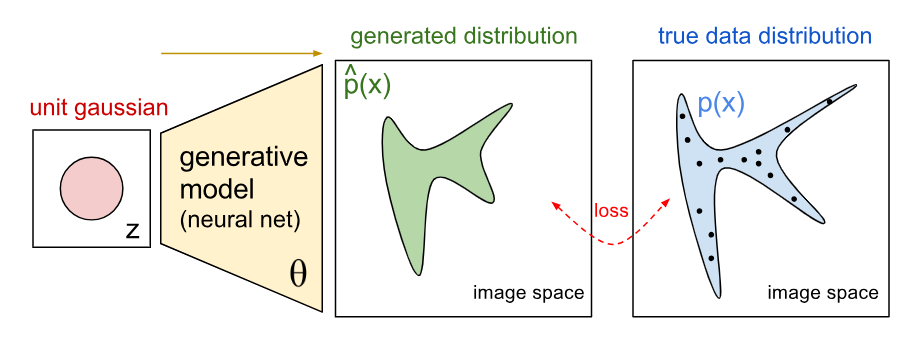I'm reading the article about generative model from Open AI, here is the section where they explain them:
Our network is a function with parameters $\theta$, and tweaking these parameters will tweak the generated distribution of images. Our goal then is to find parameters $\theta$ that produce distribution that closely matches the true data distribution. Therefore, you can imagine the green distribution starting out random and then the training process iteratively changing the parameters $\theta$ to stretch and squeeze it to better match the blue distribution.
I don't understand what are the meaning of these parameters $\theta$ and how does tweaking these parameters will tweak the generated distribution of images, can someone explain ? Thanks!

